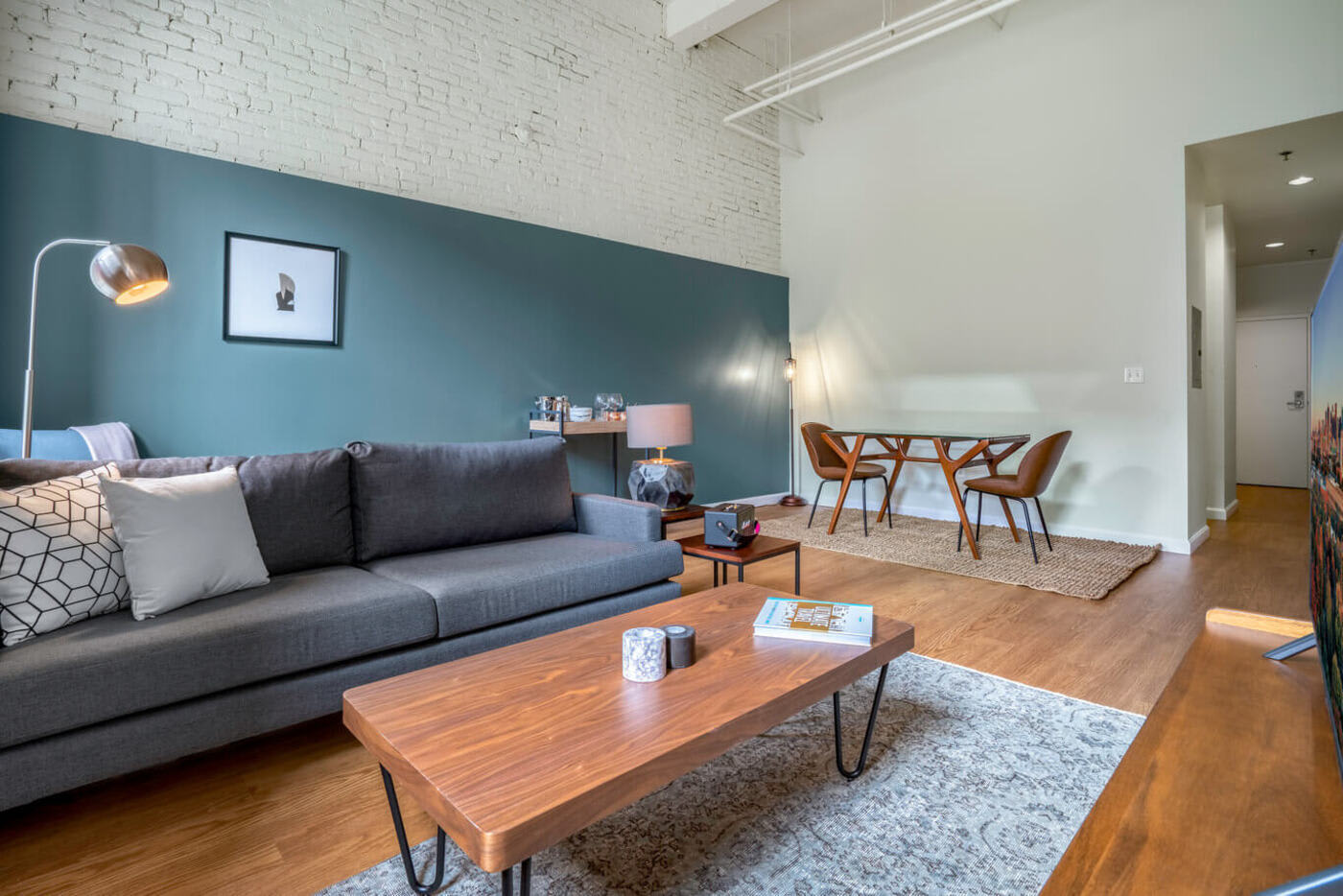Deciphering digital nomads’ housing trends in 2022
Let’s explore how remote working can reshape the real estate industry.

The business world has experienced drastic changes over the last few years.
And along with it, the way people used to work and live has changed at the same pace.
So many of the jobs that once required employees to have a daily commute to the office are now performed from the comfort of their couch or bedroom.
This change is paving the way for a more flexible working environment.
With advances in technology, many employees have the option of not only working from their homes but also from any location they like.
At the same time, as new types of work have emerged, people’s housing needs have changed as well.
These changes have slowly started creating new, flexible options in the housing industry.
In this article, we’ll explain some of the new housing needs of digital nomads in a post-pandemic era.
The Digital Nomads’ Scene in 2022
By definition, digital nomads are people who are location-independent and use technology to perform their day-to-day job tasks.
So digital nomads frequently travel from one country to another, hopping across cities.
While some people travel the world, there are others who live and work in one particular country or area, switching between different cities.
Also in terms of duration, there are professionals that are mobile for shorter periods of time and return at some point to their home base. And there is a portion of people that travel for years, switching between different continents and countries.
Despite the differences and variations between individuals or groups of nomads, one thing is for sure. People who choose this lifestyle have a passion for travel and new adventures and can work anywhere as long as they have access to the Internet.

Pandemic’s Impact on the Nomadic Life
Although this lifestyle has existed for a few years now, it mostly blossomed after the COVID-19 pandemic.
According to a research study from the MBO Partners State of Independence, there are around 15.5 million digital nomads in the US, an increase of 42% from 2020, and an increase of 112% from the year before the pandemic (2019).
The previous data suggests that despite the global mobility restrictions due to Covid measures, nomadic life increased unbothered.
Since employees were not required to return to their company’s offices, remote working was the main working model that most companies and organizations followed in 2020 and 2021.
The same study also found that people who are keener on the digital nomad lifestyle are mainly Gen Zs and Millennials.

Source: MBO Partners
In 2021, 65% of digital nomads were Generation Z and Millennials while 35% were Gen X and Baby Boomers.
Apparently, older employees and workers are more concerned about the COVID-19 pandemic and their greater risk of illness, thus making them less interested in a nomadic lifestyle.
Reasons Behind the Growth of Digital Nomads
Based on the previous findings, it’s pretty clear that the success of remote working and digital nomad lifestyles will continue for years to come.
Hence, being able to work from anywhere in the world is expected to become more popular once all travel restrictions are lifted due to COVID-19.

There are many reasons why more and more people decide to become digital nomads.
According to MBP Partners, 85% of digital nomads are very satisfied with the way they work.
All in all, it would be justified to assume that being able to work from anywhere seems a great way to achieve a better work-life balance even if you are working more hours.
There are some resources suggesting that remote workers and digital nomads not only are very satisfied but are also more productive compared to traditional office workers.
At the same time, many people admit that they are content with their income while being a nomad.
Most likely, this is due to digital nomads placing a greater emphasis on not only earnings but also on traveling to new places.
Many digital nomads also report that as long as they earn enough to support their travels, they are satisfied with their income.
That being said, traveling to different cities or even countries means that nomadic people need to earn enough to support that lifestyle, even in the short term.
So hopping from place to place could have a great impact on someone’s savings, especially when choosing to stay in famous cities like NYC, LA, San Francisco, etc.
Hence, being able to manage your expenses as a digital nomad is vital. Especially on housing matters—the most common suspect when you see your wallet “bleeding”.
Let’s dive even deeper into the housing preferences of digital nomads. This will help us see how these preferences can bring exciting innovations to the real estate industry.
Housing Trends for Digital Nomads and Professional Travelers
People’s preferences have shifted during the last two years, through the pandemic.
As of today, the idea of buying a house or an apartment doesn’t seem appealing at all. Mortgage interest rates are soaring, hitting their highest levels in more than three years.
Currently, renting a property seems the most preferred way to go.
Though the median rent keeps increasing, especially in major cities, it seems like a more flexible and less binding option compared to buying.
Lately, more and more young people seem to prefer renting over buying.
According to New York Times, millennials find renting the only housing option.
Another study from Rent.com helps verify that. A few potential reasons behind this are:
- The accumulated debts because of the student loans
- More mobile lifestyle, not wishing to settle down very quickly
- The so-called “job hopping” phenomenon, which became relatively sensible during the pandemic and the “Great Resignation”
The same is obviously true for digital nomads.
So renting an apartment is the only fitting option when traveling to several different countries or cities.
Above all, being able to work from anywhere means finding a place to stay each time. Changing homes frequently sounds both expensive and tiring.
Also, it’s no secret that housing is the largest expense in the US and probably the same thing applies to the rest of the world as well.
As a result, finding affordable and convenient accommodations is seen as one of the biggest challenges for digital nomads.
When considering the need for more flexible housing solutions, there are several types of accommodations in the market that digital nomads can choose to tackle the difficulties they might face while roaming the world.
Here are the Best Accommodation Types for Digital Nomads
1. Hotels or Hostels
As the most traditional and well-known option on the list, staying in a hotel or a hostel needs no further introduction.
Choosing a hotel room can be great for short stays, maybe for a few days or weeks.
However, it’s definitely not a very cost-effective option when it comes to staying for months. Plus, hotels are mostly oriented to seasonal tourists, making them a less appealing option for business travelers and remote workers.
Pros:
- A good option for short stays
- Less expensive
- Vacation-like feeling
Cons:
- No dedicated spaces for work or a place to cook
- Limited privacy
- Small spaces
2. Fully Furnished Apartment Rentals

Furnished apartments are a great option for digital nomads that require a home for both short and longer periods of stay. That mostly depends on how frequently they wish to change their destination.
And a short-term period could range from a few weeks to even months. At the same time, someone can rent a furnished apartment for longer periods, ranging from one to several years.
This type of stay requires fully furnished apartments or full homes that come equipped with all the essential appliances. These properties are often mentioned as turnkey apartments as they are ready to accommodate tenants from the first minute they step in.
The majority of places like these offer utilities and WiFi as part of the rent. Plus, most units include fully equipped kitchens with all the appliances that someone needs.
On the downside, such types of apartments can be a bit pricey.
However, there are several companies that offer fully furnished accommodation in major destinations across the world.
A few examples of such companies are Airbnb, Blueground, Housing Anywhere, Nestpick, etc.
Pros:
- Dedicated privacy
- Turnkey properties
- More home-like experience
- Ideal for short and long-term stays
Cons:
- Can be expensive
- Less indoor amenities compared to a hotel

3. Communal Living aka ‘Co-living’
Individuals who live in co-living accommodations have their own private bedrooms but share other common indoor areas such as the kitchen, living room, dining area, etc. This type of accommodation is ideal for digital nomads as it’s very common to find shared coworking spaces in these types of buildings.
However, the main reason is that it provides access to desirable locations which would otherwise be out of reach at an affordable price.
Therefore, big, trendy cities like NYC, LA, Chicago, San Francisco, and more tend to be the most popular locations for ‘co-livers’.
Co-living spaces are a great alternative for digital nomads who are passing through a city and want to blend easily with the local community.
Must-have facilities usually include high-speed WiFi, indoor co-working spaces, desks where people can work, and leisure areas where tenants can relax and socialize.
Pros:
- A less expensive option
- Indoor facilities to eat and work
- Community feeling offers a great way to socialize
Cons:
- Less privacy
- Can be overcrowded
4. Housesitting
Though housesitting is not a very popular form of accommodation, it’s a great option when someone wants to stay in a new place for free.
To be more accurate, housesitting is more like a side job that includes free accommodation rather than an actual housing option.
Put simply, housesitting, according to Wikipedia, is when a person leaves their home and entrusts it to a third person in order to take care of the property and most of the time take care of the pet they leave behind.
Though it sounds like a very limiting option, it’s a very cost-effective housing option for digital nomads for a short period.
Plus, since the “homesitters” are actually living in a fully furnished unit with all the essentials included, it’s a good option for remote workers as well.
Pros:
- Very affordable
- Could include extra income
Cons:
- Very limiting in terms of destination variety
- High responsibility
- Good mostly for short periods
5. Caravan living
Living in a caravan or in any type of vehicle couldn’t be missing from that list. This option is great for those who are looking to live a “hardcore” nomadic life on the road. It’s a great way to combine work, life, and the chance to explore the outdoors.
Though it might sound very limiting, technology is offering a solution to almost every need remote workers might have.
From a travel WiFi connection to an in-vehicle stove, living in a van or an RV has become quite convenient.

Pros:
- A very flexible type of housing for nomads
- Adventurous and carefree
Cons:
- Limiting in terms of mobility, as you can only travel on the mainland
- Can be expensive if you consider gas prices
So How to Find the Ideal Housing for Digital Nomads?
Before going off to live as a digital nomad, there is a need to make an action plan.
A valid passport alone might not be enough to travel abroad when a visa might be required. This depends on the country of destination and the person’s citizenship.
The most effective way to save up money and avoid any stumbling blocks is to plan ahead.
If someone plans to rent for at least a month, they may need:
- Payment of a deposit
- Income proof
- References from landlords
Additionally, flexibility is crucial. Tell your host in advance if your stay could change. Renting a property on a month-to-month basis or something similar could be more effective as a housing option for digital nomads.
In this way, you will not lose money if you need to shorten your stay.
As for keeping the apartment longer, all you have to do is renew the monthly agreement.
Many digital nomads find themselves in situations where they want to stay longer but have to leave the property.
All in all, the best option is to simply look for a short-term rental.
As long as they are flexible and budget effectively, finding quality housing for the duration of your stay shouldn’t be a problem.
Tip: To protect yourself from several issues that might come up during a business trip, purchase travel insurance.
Conclusion
The number of remote workers and their housing needs have changed dramatically in the last two years.
Each day, more flexible accommodation options are sprouting to meet the needs of digital nomads.
However, choosing an exact housing rental option depends on what a person is looking for and how long they plan to spend in a particular destination.
As the real estate industry continues to change, the hybrid and remote work lifestyle becomes the new normal.
So it provides the nomads more freedom to choose where and how they want to work.








